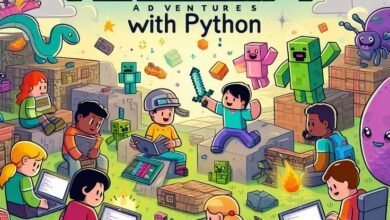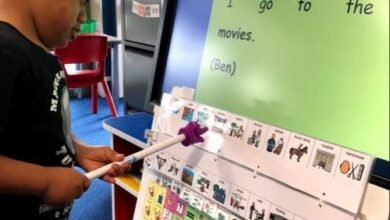Junior High School Education: Key Stages in Early Adolescent Learning
Junior High School Education: Key Stages in Early Adolescent Learning

Introduction
Junior high school is more than just the bridge between elementary school and high school—it’s the foundation for shaping young minds, fostering independence, and building the skills essential for future success. From academic discipline to personal growth, these formative years lay the groundwork that students will carry with them throughout their lives.
If you’re wondering what makes junior high school such an integral part of education, this guide will provide a deep dive into its importance, curriculum, challenges, and long-term impact. Whether you’re a parent, teacher, or education enthusiast, this blog will underline why investing in junior high school education is critical for our students’ future.
Why Junior High School Education is Pivotal
Junior high school, typically catering to students aged 11–14, represents a transitional phase that is as challenging as it is rewarding. During these years, students experience significant cognitive, emotional, and physical development. As they learn to balance social interactions, academic responsibility, and emerging independence, junior high school steps in as the nurturing space that equips them with:
- Critical thinking and problem-solving skills
- Foundations for lifelong learning
- Self-discipline and time-management abilities
- Social and emotional intelligence
These years aren’t just about academic knowledge; they’re about shaping well-rounded individuals ready to meet the demands of the future.
What Does the Junior High School Curriculum Look Like?
Junior high school offers a diverse and balanced curriculum designed to cater to academic growth and personal development. Here’s what you can typically expect:
Core Subjects
The subjects taught in junior high schools aim to build a solid academic foundation:
- Math: From foundational algebra to geometry concepts, math helps students develop analytical and problem-solving skills.
- Science: Topics in biology, chemistry, and physics encourage curiosity and a deeper understanding of the natural world.
- English Language Arts: Focused on reading, writing, and critical analysis to build communication and comprehension skills.
- Social Studies: Introducing history, geography, economics, and civics to provide students with knowledge about the world and their role in it.
Technology Integration
With the world leaning increasingly on technology, junior high schools are adapting by integrating tech into their classrooms:
- Coding classes to introduce programming fundamentals
- Digital tools like educational apps, smartboards, and Google Classroom for efficient learning
- Research skills to help students learn how to source information effectively and responsibly
Extracurricular Activities
Beyond academics, schools emphasize all-around development through extracurriculars such as:
- Sports teams: Fostering teamwork, discipline, and physical health
- Music, drama, and arts programs: Encouraging creativity and self-expression
- Clubs and societies: Providing opportunities to explore hobbies, develop leadership skills, and build friendships
Critical and Analytical Skills
Teachers are also focused on developing critical thinking abilities through project-based learning, group discussions, and debates, preparing students to analyze information and build strong arguments—a skill that’s invaluable throughout life.
How Teachers and Parents Can Support Junior High School Students
Support from both educators and parents plays a pivotal role during junior high school. Here’s how they can help:
Teachers’ Role
- Fostering Engagement: Teachers need to create lessons that captivate students’ interest while aligning with their learning styles.
- Encouraging Growth Mindsets: A positive, growth-oriented approach in teaching can boost students’ confidence to take on challenges.
- Providing Emotional Support: Teachers should act as mentors, helping students manage stress and build resilience.
Parents’ Role
- Open Communication: Maintain an open dialogue about school activities, challenges, and personal aspirations.
- Active Participation: Stay involved in their education by attending parent-teacher meetings and reviewing study progress.
- Offering Encouragement: Motivate them to explore their interests, but avoid pressuring them—a balanced approach fosters confidence and curiosity.
Together, teachers and parents create a support system that sets students up for academic, emotional, and social success.
Common Challenges in Junior High School (and How to Overcome Them)
While junior high school is rewarding, it also presents unique challenges—for both students and their guardians.
1. Social Pressures
The Challenge: Adolescents often face peer pressure and social anxieties as they strive to form their identities.
The Solution: Encourage participation in group activities, foster healthy friendships, and teach conflict resolution skills.
2. Academic Stress
The Challenge: Balancing increased academic expectations across multiple subjects can overwhelm students.
The Solution: Time management strategies, a structured study routine, and open discussions about workload can help ease the pressure.
3. Transitioning to High School
The Challenge: Preparing for the academic and social differences in high school can be daunting.
The Solution: Offering guidance, setting achievable goals, and celebrating small wins can make this transition less intimidating.
By addressing these challenges proactively, students can thrive both emotionally and academically.
Lifelong Benefits of a Strong Junior High School Foundation
A strong foundation in junior high school doesn’t just prepare students for high school—it sets the stage for lifelong success. Academic competency, critical thinking, and emotional intelligence cultivated during these years contribute significantly to future accomplishments.
Need proof? Here are a few inspiring examples of successful individuals:
- Elon Musk: Known as a bright student, Musk credits his early years of education for fostering his love of science and problem-solving.
- Michelle Obama: Former First Lady Michelle Obama reflects on how structured education in her formative years shaped her leadership and advocacy skills.
- Bill Gates: A passion for learning nurtured in his school years led him to build one of the most impactful tech companies of all time.
These stories remind us how investing in junior high school education can lead to extraordinary outcomes.
Helping Students Flourish Through Junior High School
Junior high school is a defining chapter in every student’s life. By fostering a supportive, dynamic, and well-structured educational experience, we can nurture minds that excel in academics and thrive in life.
Whether you’re a parent, teacher, or part of your community’s education system, it’s crucial to invest time and resources into ensuring that students have everything they need to succeed during this pivotal phase.
Want to learn more? Explore resources, tools, and expert tips on enriching junior high school education. Together, we can create brighter futures for the next generation.



